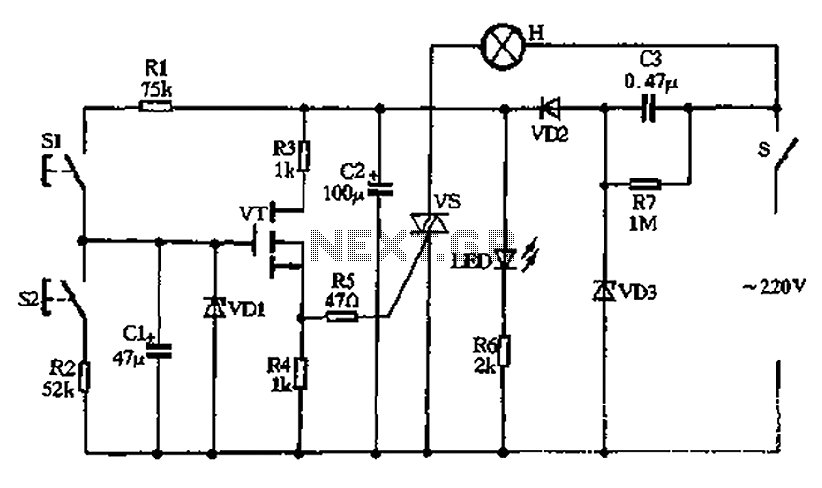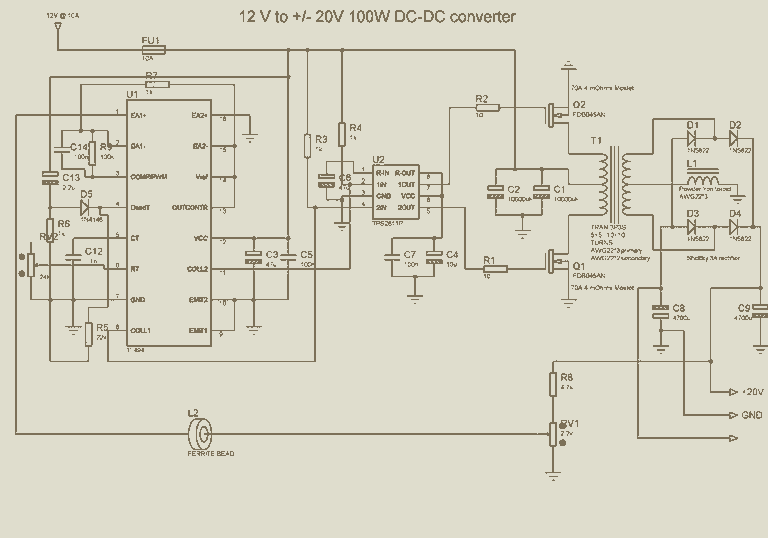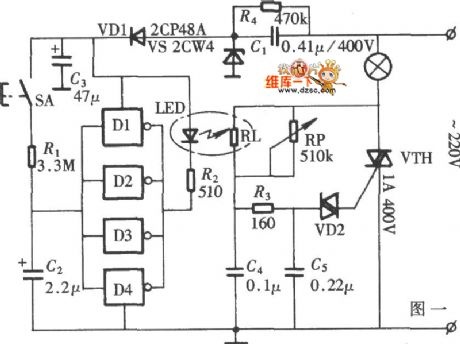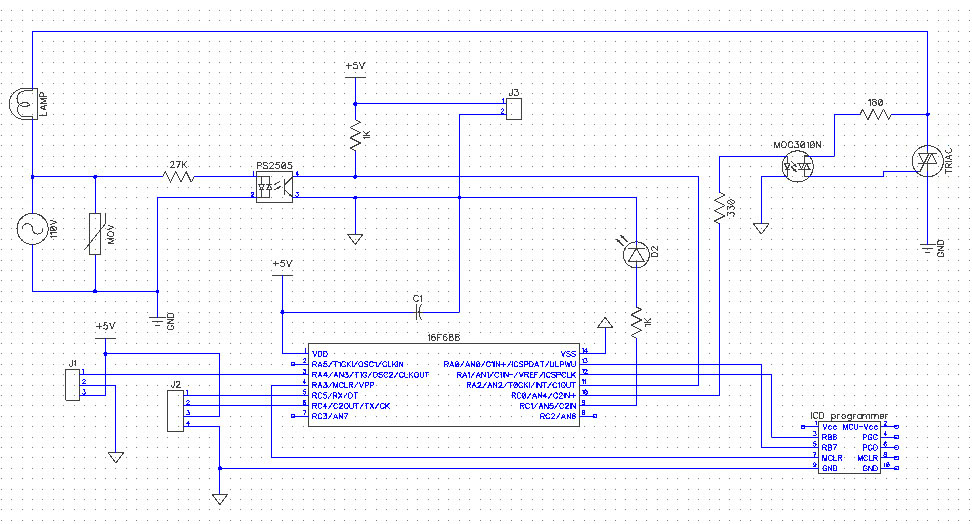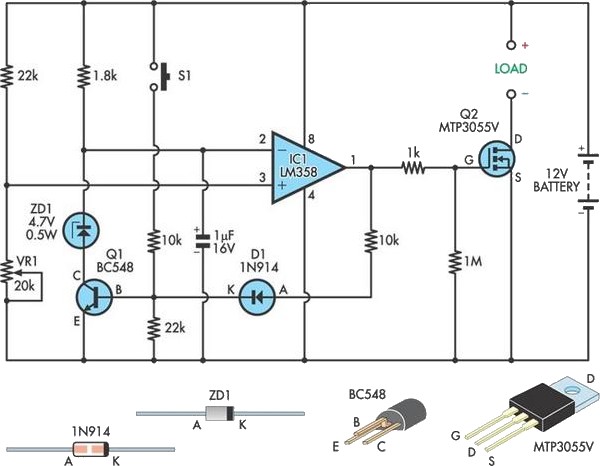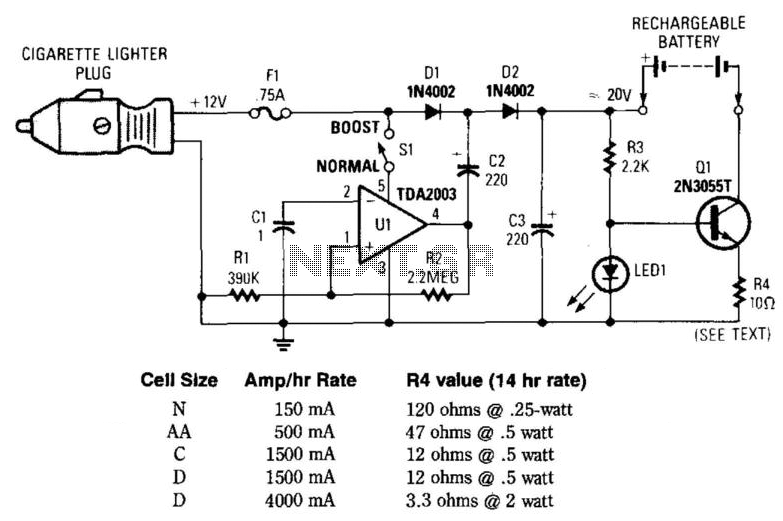
12V Halogen Dimmer
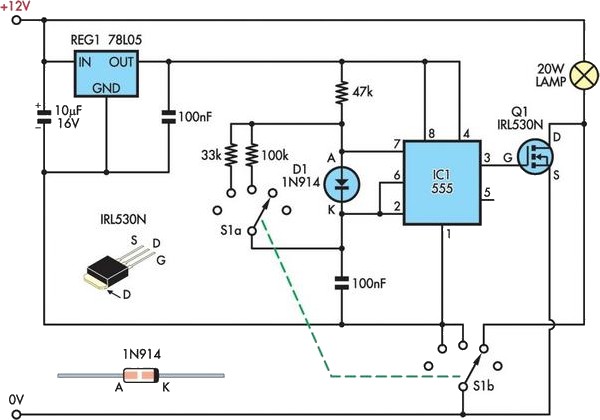
A 12V 20W halogen lamp (MR16) is utilized in a bike light system powered by a 4.2Ah SLA battery. Due to the limited battery life at this power rating, a cost-effective light dimmer has been designed to reduce battery drain, enabling longer nighttime rides. This dimmer is based on a simple 555 timer circuit and a MOSFET switch (Q1), which operates by pulse-width modulation (PWM) of the 12V supply to the lamp. The 555 timer (IC1) is configured as a free-running oscillator with selectable mark/space ratios through a 2-pole, 5-position rotary switch (S1). The third position of the switch bypasses the electronic circuitry, connecting the lamp directly to the battery negative, providing three power levels of approximately 7W, 13W, and 20W. A logic-level IRL530N MOSFET, featuring a drain-source "on" resistance of only 0.1 ohms, ensures low losses and negates the need for a heatsink. An alternative suitable component is the STP30NE06L MOSFET (Jaycar Cat. ZT-2271).
The circuit operates effectively by utilizing a 555 timer configured in astable mode to generate a PWM signal that modulates the power supplied to the halogen lamp. The rotary switch (S1) allows the user to select different duty cycles, which correspond to varying power levels. In the first two positions, the PWM signal is applied to the MOSFET, controlling the average power delivered to the lamp and thus adjusting its brightness. The third position serves as a bypass, allowing full power operation without modulation, which is useful when maximum brightness is required.
The choice of the IRL530N MOSFET is critical for maintaining efficient operation; its low on-resistance minimizes power loss during operation, enhancing the overall efficiency of the system. The absence of a heatsink simplifies the design and reduces weight, which is advantageous for a bike light application. The alternative STP30NE06L MOSFET can be used interchangeably, providing flexibility in component selection based on availability or cost considerations.
Overall, this dimmer circuit not only prolongs the battery life but also enhances the functionality of the bike light system, allowing for tailored brightness levels that suit different riding conditions.I use a 12V 20W halogen lamp (MR16) and a 4. 2Ah SLA battery for my bike light system. The battery has only limited life at this power rating, so I designed this cheap light dimmer to reduce the battery drain and allow for longer rides at night. Based on a simple 555 timer circuit and Mosfet switch Q1, it works by pulse-width modulating the 12V sup
ply to the lamp. The 555 (IC1) is wired as a free-running oscillator, with two different mark/space ratios selectable via a 2-pole, 5-position rotary switch (S1). The third switch position bypasses the electronic circuitry and connects the lamp directly to battery negative.
This gives three power levels of about 7W, 13W and 20W. A logic-level IRL530N Mosfet with a drain-source "on" resistance of only 0. 1 © ensures low losses and eliminates the need for a heatsink. An STP30NE06L Mosfet (Jaycar Cat. ZT-2271) would also be suitable. 🔗 External reference
The circuit operates effectively by utilizing a 555 timer configured in astable mode to generate a PWM signal that modulates the power supplied to the halogen lamp. The rotary switch (S1) allows the user to select different duty cycles, which correspond to varying power levels. In the first two positions, the PWM signal is applied to the MOSFET, controlling the average power delivered to the lamp and thus adjusting its brightness. The third position serves as a bypass, allowing full power operation without modulation, which is useful when maximum brightness is required.
The choice of the IRL530N MOSFET is critical for maintaining efficient operation; its low on-resistance minimizes power loss during operation, enhancing the overall efficiency of the system. The absence of a heatsink simplifies the design and reduces weight, which is advantageous for a bike light application. The alternative STP30NE06L MOSFET can be used interchangeably, providing flexibility in component selection based on availability or cost considerations.
Overall, this dimmer circuit not only prolongs the battery life but also enhances the functionality of the bike light system, allowing for tailored brightness levels that suit different riding conditions.I use a 12V 20W halogen lamp (MR16) and a 4. 2Ah SLA battery for my bike light system. The battery has only limited life at this power rating, so I designed this cheap light dimmer to reduce the battery drain and allow for longer rides at night. Based on a simple 555 timer circuit and Mosfet switch Q1, it works by pulse-width modulating the 12V sup
ply to the lamp. The 555 (IC1) is wired as a free-running oscillator, with two different mark/space ratios selectable via a 2-pole, 5-position rotary switch (S1). The third switch position bypasses the electronic circuitry and connects the lamp directly to battery negative.
This gives three power levels of about 7W, 13W and 20W. A logic-level IRL530N Mosfet with a drain-source "on" resistance of only 0. 1 © ensures low losses and eliminates the need for a heatsink. An STP30NE06L Mosfet (Jaycar Cat. ZT-2271) would also be suitable. 🔗 External reference
Warning: include(partials/cookie-banner.php): Failed to open stream: Permission denied in /var/www/html/nextgr/view-circuit.php on line 713
Warning: include(): Failed opening 'partials/cookie-banner.php' for inclusion (include_path='.:/usr/share/php') in /var/www/html/nextgr/view-circuit.php on line 713
